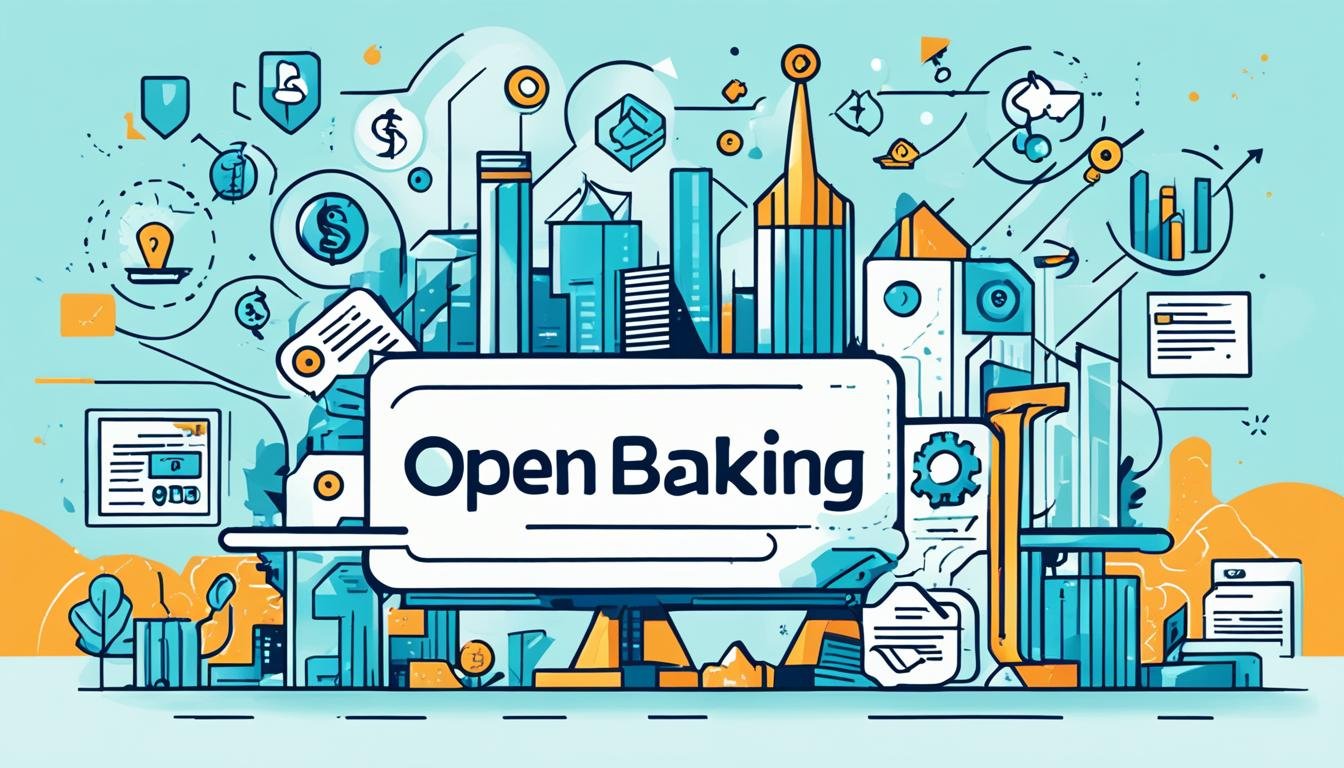Open Banking: Unlock the Future of Your Money (It’s Not What You Think)
The future of money is changing fast. Soon, Open Banking will move more than $330 billion world-wide by 2027. This change is big and lasting. It’s changing how money works everywhere. Open Banking lets your financial info be free from just one bank. This means better security and services for everyone. The old banking ways are leaving. In their place? A world where your money works for you, clear and under your control.
Key Takeaways
- Open Banking’s expected global transaction value reflects its transformative role in the future of money.
- Consumers gain from the interoperability and convenience offered by Open Banking, an integral part of financial technology evolution.
- The concept is a cornerstone of digital transformation, changing how we interact with financial services.
- With its rise, Open Banking heralds a new chapter of banking innovation, offering potential for truly personalized banking.
- Understanding the implications of Open Banking can position consumers and businesses to fully leverage its advantages.
Demystifying Open Banking and Its Origins
Open Banking is a powerful change in how we handle money. It lets financial information move safely between banks. This gives people more power and brings new services. The idea started in the UK and is now spreading worldwide, changing how we think about our financial information.
What Exactly is Open Banking?
Open Banking means your financial data belongs to you. You can share it safely through special tech called APIs. This leads to services that meet your specific needs. It also makes banks work harder to create things that really help their customers.
The UK’s Trailblazing Role in Open Banking Development
The UK leads the way in Open Banking. They aim to make banking better and more competitive. It began with rules from the Competition and Markets Authority. These rules break down barriers and increase choices and clarity for everyone.
The Legal Framework: From PSD1 to PSD2 and Beyond
Open Banking is built on important laws, starting with PSD1 and now PSD2. PSD2 focuses more on protecting you, your money, and making payment systems work together in Europe. It’s pushing Open Banking forward in Europe and setting an example for the world. It’s reshaping how laws look at our financial data and transactions.
The Global Adoption of Open Banking
Financial services are changing fast as Open Banking spreads worldwide. Different regions are adopting Open Banking in unique ways. This shows their goals and the rules they follow.
Europe’s Enthusiastic Embrace of Open Banking
In Europe, Open Banking is part of daily banking, boosted by the PSD2 rule. This rule has created a safe, fair market. It makes services that protect consumers and their data grow.
Brazil and India’s Rapid Integration into the Open Banking Landscape
Brazil and India are quickly joining the Open Banking movement. They’re building systems for banks and other services to connect easily. This shows they’re serious about including everyone in banking and using new tech.
Open Banking in the US: A Different Path Toward Innovation
In the US, Open Banking is growing naturally, not because of new laws. Here, fintechs and new companies lead the way. They use Open Banking to make banking better for everyone, without being forced by rules.
| Region | Approach to Open Banking Adoption | Key Developments |
|---|---|---|
| Europe | Regulatory-driven, PSD2 compliant | Secure, competitive banking ecosystems with a focus on consumer rights |
| Brazil | Strategic framework implementation | Significant advances in account connectivity and data sharing initiatives |
| India | Rapid digital infrastructure build-up | Large-scale integration of Open Banking standards promoting financial inclusion |
| US | Market-driven, innovation-centric | Growing popularity of Open Banking-powered payment services |
Open Banking adoption is a mix of new ideas, focusing on users, and tech. Looking forward, Open Banking’s big effects are just starting to show. The mix of working together, fighting fair, and following rules is changing banking everywhere.
The Mechanics Behind Open Banking: How APIs Revolutionize Finance
Open Banking is changing the finance world with APIs at its heart. This change allows secure data sharing like never before. It brings a level of connection that was impossible in the past.
The Role of APIs in Secure Data Sharing
APIs are crucial for Open Banking, enabling secure data transfer between banks. They offer a safe path for sharing important financial details. By embedding strong security measures, they ensure this information is always protected.
Interoperability: The Backbone of Open Banking Infrastructures
Interoperability is essential for Open Banking to work. It lets different banking systems and apps work together smoothly. APIs help these services speak the same language, creating a unified financial experience.
| Feature | Traditional Banking | Open Banking |
|---|---|---|
| Data Accessibility | Limited to the banking institution | Accessible across platforms |
| User Experience | Siloed and inconsistent | Integrated and seamless |
| Secure Data Transfer | Constrained by internal protocols | Enhanced by standardized APIs |
| Innovation Potential | Limited scope for development | Enables rapid fintech innovation |
APIs are the secure, flexible way needed for sharing data in Open Banking. Interoperability underpins the whole system. Together, they change finance for the better, leading to a more efficient and user-focused banking world.
The Tangible Benefits of Open Banking for Consumers
Open Banking is starting a new phase in consumer finance. It connects old banking ways with what modern users want. These users now demand efficiency and full control over their finances.
Open Banking puts control back in the consumer’s hands. It’s key for users to see all their financial info in one place. Before, banking details were scattered. Now, they are unified, giving people quick insights. This makes managing money simpler and boosts user confidence.
It also sparks competition among financial firms. This benefits consumers by offering better deals and more product choices. The financial marketplace becomes more lively. Companies are pushed to create new things that meet consumer needs. This leads to better financial tools and advice for managing money.
“Effortless transactions, tailored financial services, and enhanced security are just the tip of the iceberg when it comes to Open Banking benefits.”
Let’s look at the real benefits of Open Banking for managing money:
- Increased Efficiency: Transactions are faster and safer. This reduces the long waits seen in traditional banking.
- Financial Empowerment: Users get tools to improve budgeting, investing, and saving. This helps them control their financial future.
- Cost Savings: More competition means lower fees and better interest rates.
This table shows how Open Banking changes financial management:
| Finance Aspect | Traditional Banking | With Open Banking |
|---|---|---|
| Account Management | Multiple logins for different accounts | Unified dashboard for all financial accounts |
| Financial Analysis | Manual tracking and assessment | Automated insights and recommendations |
| Payment Processing | Time-consuming setup for each payment | Quick, secure, and direct payments |
| Customer Service | Generic responses | Personalized support and advice |
Open Banking changes more than just transactions. It also improves financial planning and analysis. It’s turning into a key part of strong money management. This shows a shift towards better finance tools for consumers.
The Skepticism Surrounding Open Banking
Open Banking offers a lot of promise for the financial world. However, many people are still wary about embracing it. Concerns about understanding and trust slow down its acceptance. It’s important to talk about these worries in detail to create a better and safer banking experience.
UK Consumers’ Understanding and Trust in Open Banking
Many in the UK are cautious about this new way of banking. They are unsure how it works and what benefits it brings. This causes a trust issue. The financial sector must work hard to explain Open Banking. Providing clear, easy-to-understand info is key to winning over users.
The Need for Transparency and Security to Foster Confidence
Open Banking rests on transparency and security. We need clear rules on how user data is protected. With strong security and openness, people will feel safe to try Open Banking services.
| Consumer Concern | Proposed Solution | Expected Outcome |
|---|---|---|
| Lack of understanding | Comprehensive education initiatives | Improved knowledge and acceptance |
| Distrust in data handling | Transparent data usage policies | Heightened trust and cooperation |
| Security fears | State-of-the-art cybersecurity measures | Enhanced confidence in Open Banking |
By tackling the doubts around Open Banking with clear communication and education, we can connect innovation and trust. This ensures trust, transparency, and security serve as the basis for a successful future in banking.
Open Banking’s Impact on the Fintech Industry
Open Banking is changing the fintech innovation game. It introduces a new way in which financial services are created and offered. This change fosters both competition and collaboration, opening doors to opportunities that go beyond what traditional banks offer.
How Open Banking Spurs Fintech Innovation
Open Banking is a key driver for fintech innovation. It allows free access to crucial financial data via secure APIs. This access breaks down old barriers, letting creative minds develop new services for today’s tech-savvy users.
Fostering Competition and Collaboration Between Banks and Fintechs
The Open Banking impact fuels competition and allows fresh players to compete with big banks. It also encourages collaboration between banks and fintechs, leading to innovative partnerships. These efforts enhance the industry, benefiting everyone involved.
Overall, Open Banking is sparking a finance renaissance. It centers on consumer power, fierce competition, and beneficial partnerships. This transformation offers consumers more control and a variety of options for their financial needs.
Convenience and Control: The Personal Finance Angle
Open Banking has started a new chapter in personal finance. It brings many Open Banking advantages to those who want more freedom with their money. This banking method allows easy and detailed management of personal funds.
One big plus of Open Banking is putting all financial info in one spot. With access to several bank accounts and services in one place, people get a complete view of their money. This makes managing money simpler and helps with smarter financial choices.
Open Banking transforms mundane financial tasks into opportunities for financial empowerment and savvy decision-making.
Open Banking also offers in-depth control over daily money matters. Users can track spending, budget, and watch over investments easily. They get a detailed look at their money health. Plus, financial advice gets better with combined financial info, pushing towards better financial well-being.
- View all accounts in a single platform
- Make secure, seamless payments
- Receive customized financial insights
Making transactions is easier too with Open Banking. It speeds up payments and transfers, reducing traditional hassles. This adds a new fluidity in managing finances.
Open Banking is a key tool for gaining financial freedom and knowledge. It empowers users to oversee their finances boldly. Thus, enabling them to plan their financial strategy to fit their dreams and aims.
How Open Banking is Influencing Traditional Banking Services
Open Banking is changing how banks work, making a big difference. Now, banks can share data and work with others to offer more. This means customers get products that fit their needs and wants better. This change is due to new technology and what customers want: more control, custom options, and efficient services.
From Static Services to Dynamic Financial Solutions
Open Banking is making banks change their old ways. Before, services were the same for everyone and not connected. Now, thanks to dynamic financial solutions, banking is more flexible. Customers get services that change with their financial needs and likes.
The Emergence of New Financial Products
This new banking way has created new financial products too. Both new and old financial players are coming up with smart solutions. These include banking that you pay for monthly and loans that are just for you. These changes show a future with services made just for the customer’s needs.
Thanks to Open Banking, banking services are getting much better for customers. This brings more choice, clear information, and safety. It’s a big change, creating a new kind of banking world. Here, the emerging products redefine what banks can do.
“Open Banking” vs. “open banking”: Nomenclature and Interpretations
The words Open Banking are more than just jargon in today’s financial world. Though they sound similar, the use of capital letters can hint at different meanings. This conversation aims to clear up these differences and see if the global finance community agrees on one meaning.
The Capitalization Conundrum: Understanding Different Contexts
Open Banking, when capitalized, points to a specific way of sharing data and making payments. It’s usually regulated. On the other hand, ‘open banking’ without capital letters talks about banking that’s easy to get to, without mentioning any rules.
Is There a Consistent Definition of Open Banking Across Borders?
Finding one meaning for Open Banking worldwide is hard. Places adopt it differently, which can be puzzling for everyone involved.
| Region | Open Banking Interpretation | Regulatory Framework |
|---|---|---|
| Europe | Regulated access to banking data | PSD2, GDPR |
| United Kingdom | Standardized sharing under CMA order | Open Banking Implementation Entity (OBIE) |
| Asia | Varies by country, mixed approaches | Country-specific regulations |
| North America | Market-driven, less regulatory imposition | Varies, with emerging standards |
The quest for a unified Open Banking meaning shows we need global talks and maybe common rules. As we agree on what Open Banking means and how to write it, it will better fit into the world’s finance system. It’s about making banking more open and cooperative.
Mastering Secure Payments in the Open Banking Ecosystem
As the Open Banking ecosystem grows, focus on secure payments gets bigger. This growth is marked by the push to keep money moves safe. It’s key to keeping trust with users. Innovations within Open Banking surely make banking better. Yet, they bring a big task of keeping payments safe.
Keeping payment security strong in this system means protecting moves of money and all data and accounts. This security is the foundation of trust in Open Banking. It helps get more people to join and creates a welcoming financial space.
- Authentication: At the base of every transaction, there are continuous efforts to make sure anyone accessing funds is allowed to.
- Encryption: Data moving from one spot to another is turned into secret codes. Only the right person with the right key can understand these, hiding the details from others.
- Fraud Prevention: Open Banking uses new tech to stop scams. This protects people’s money from unapproved access and bad intentions.
With these strong supports, secure payments become a main part of Open Banking. This gives people the confidence to move into a new banking age.
| Security Aspect | Role in Payment Security | Benefit to Users |
|---|---|---|
| Advanced Authentication | Ensures that transactions are begun by checked users. | Lessens the chance of unapproved access and builds trust. |
| Encryption Protocols | Makes data safe when sent between banks. | Keeps one’s financial info safe from being taken wrongly. |
| Fraud Detection Algorithms | Looks for patterns to find and stop strange actions. | Gives a layer of protection from possible money scams. |
The journey to master secure payments in Open Banking has hurdles and needs constant watch. Yet, advances in tech and rules keep making the financial future safer. In this future, Open Banking continues to be innovative while being safe with money.
Open Banking’s Future: Looking Beyond Payment Services
The journey of Open Banking marks the start of a new era for finance. It moves beyond just handling payments. Think of a future where Open Finance leads, offering tailored, data-driven experiences. This shift towards an all-inclusive financial community showcases the lively potential of the Future of Open Banking. It shows us how our money dealings and relationships with banks could change.
The Promise of Open Finance
Open Banking is just the beginning of a larger journey towards Open Finance. Open Finance transforms the concept of easy access and clear data. It imagines a scenario where all customer data, from banking to insurance, works together. This unity allows for unmatched ease and personalization in finance, giving people more control over their money.
Prospects for Enhanced Data-Driven Financial Experiences
The aim for more customized services aligns with the Future of Open Banking. When financial firms use customer data smartly, innovation happens. These new insights lead to groundbreaking services. They not only meet what customers want but also predict it. This ensures the finance industry remains ahead, matching future consumer needs.
Conclusion
Open Banking is changing the finance world, bringing new ways to handle money with ease and customization. This shift goes beyond old banking methods, creating space for exciting innovations. Consumers now have more control than before. But, to fully accept Open Banking, people need clear information and security promises. Building trust and ensuring safety are key for everyone involved.
Open Banking is a bright spot showing what’s possible when tech meets finance. It lays the groundwork for major changes, where everyone has more say and innovation thrives. This approach is reshaping how we deal with banks, leading us to a better-connected financial world.
Open Banking’s future looks promising, aiming to reshape finance with more data and user-focused services. As it grows, finance will become even more about the customer. Ensuring that people understand and trust it is vital for growth and stability. Looking forward, we’ll see finance built on strong connections, clear information, and shared progress.
FAQ
What is Open Banking?
How did Open Banking originate?
What is the legal framework for Open Banking?
How has Open Banking been adopted globally?
What is the role of APIs in Open Banking?
What are the benefits of Open Banking for consumers?
Why is there skepticism surrounding Open Banking?
How does Open Banking impact the fintech industry?
What advantages does Open Banking offer for personal finance?
How is Open Banking influencing traditional banking services?
Is there a consistent definition of Open Banking?
Why is mastering secure payments crucial in the Open Banking ecosystem?
What does the future of Open Banking look like?
Source Links
- https://www.americanbanker.com/podcast/what-will-it-take-for-open-banking-to-take-hold-in-the-u-s
- https://moneylive-insights.com/post/the-future-of-open-banking-payments/
- https://www.washingtonpost.com/business/2023/06/06/what-is-open-banking-how-does-it-unlock-consumer-finance-and-fintech-apps/90e4614c-042a-11ee-b74a-5bdd335d4fa2_story.html







